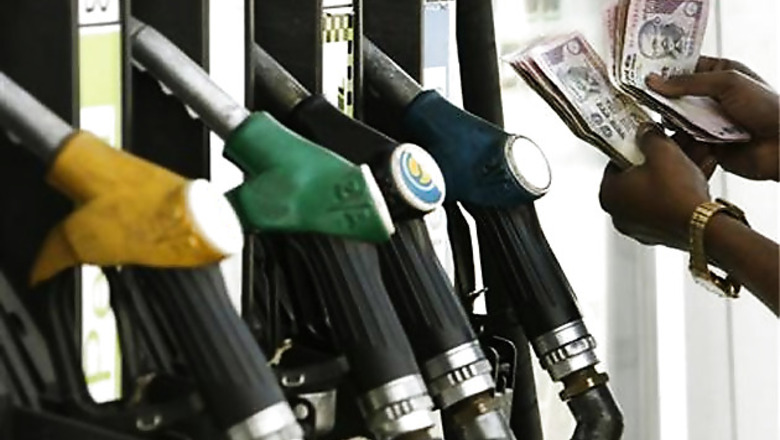
views
Mumbai: The rupee fell to a fresh record low on Thursday as a sharp increase in petrol prices failed to lift investor sentiment even as it fueled expectations New Delhi might soon take the more politically fraught step of raising diesel prices.
India's hefty subsidy bill for diesel, kerosene and LPG is a budget-buster that forces heavy government borrowing and weighs on investor sentiment. High global energy prices and a declining rupee, meanwhile, exacerbate the current account deficit in a country that imports 80 per cent of its oil.
Oil companies lose about 14 rupees per litre on diesel, which is much more widely used than petrol, and a weakened government has been unable to push through a price rise or allow full market pricing in the face of political opposition, including from within the ruling coalition.
"Petrol is a low-hanging fruit, as the challenges will come when the government would be deciding on diesel, liquefied petroleum gas, and kerosene, because this is where the subsidies are larger," said Shubhada Rao, chief economist at Yes Bank in Mumbai. "Signal wise, it is a step in the right direction."
A panel of ministers is due to meet on Friday to discuss diesel, LPG and kerosene prices, according to unconfirmed reports, although full deregulation is not expected.
"We think the government's ability to implement this price hike could raise market expectations about price hikes in other more critical fuels. While diesel prices in particular would need immediate attention, significant price increases are unlikely, in our view," Goldman Sachs wrote on Thursday.
(Also read: Blog - It's time India bites the diesel bullet, click here)
The three big state oil retailers said late on Wednesday they would raise the price of petrol by about 11.5 per cent.
The rupee hit an all-time low of 56.40 to the dollar on Thursday, continuing a slide that has seen it lose 13.8 per cent from a February peak as global risk aversion hits India especially hard due to its twin deficits and sluggish policymaking, all of which has scared off investors.
While the Reserve Bank of India has taken administrative measures and sold dollars in recent weeks to defend the currency, it has refrained from taking bolder steps and appears resigned that more aggressive intervention in the market could prove futile.
"Since the U.S. dollar is gaining strength against the major counterparts like euro, we can see rupee weakening further. We expect a 1-3 months range of 54-57 with overall weakening bias in rupee," Abhishek Goenka, CEO of India Forex Advisors, wrote in a note on Thursday.
Economists have been downgrading their growth forecasts for Asia's third-largest economy. Standard Chartered now expects India to report annual growth in the March quarter slowed to 6 per cent, from 6.1 per cent in the previous quarter and below earlier expectations of an improvement to 6.5 or 7 per cent.




















Comments
0 comment